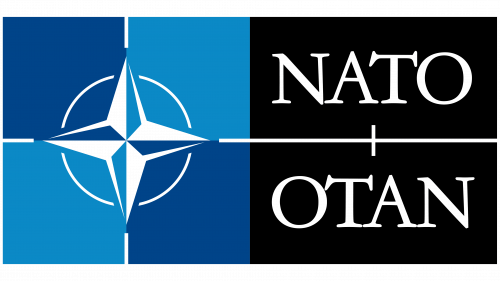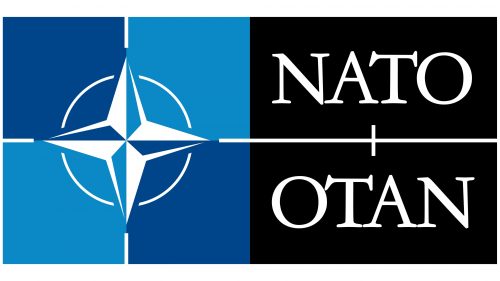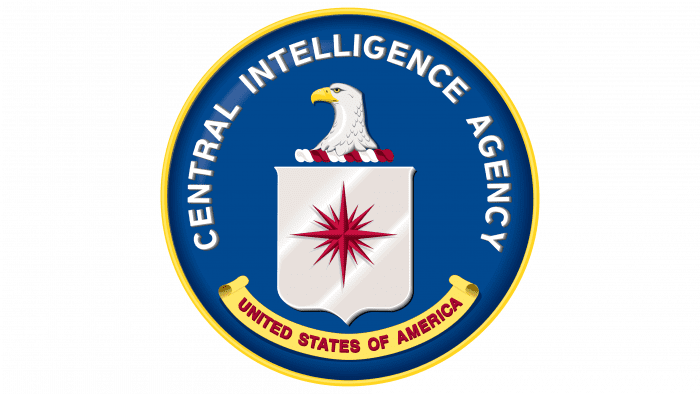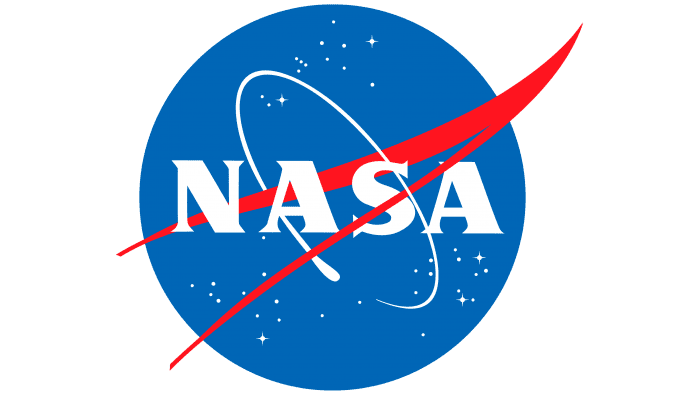The NATO logo is filled with hidden symbolism and vital messages. The emblem embodies friendship and vigilance in preserving peace and security within member countries and across the globe.
NATO: Brand overview
| Founded: | 4 April 1949 |
| Headquarters: | Brussels, Belgium |
| Website: | nato.int |
Meaning and History
NATO’s objectives include conflict deterrence, crisis prevention, and protecting the borders and freedoms of its member states. The organization’s emblem reflects these goals. Every symbol portrays themes of defense, vigilance, and protection. A universally understood color palette conveys the alliance’s ideals. The emblem was adopted in 1953. The special Information Policy Working Group oversaw the design, which insisted on peaceful symbols for the logo.
Interestingly, the initial choice differed: a white shield with blue stripes and 14 stars. The heraldic symbol denoted protection, stripes represented the Atlantic, and the stars symbolized member countries. The shield concept was discarded since, with new members, stars would constantly need to be added. Thus, the compass rose became the logo.
What is NATO?
An organization founded in 1949 to counter the expanding influence of the USSR in Europe. Starting with 12 members, the alliance expanded to 31 participants in 2023 following Finland’s accession. NATO operates based on three core principles: peace, cooperation, and defense. Its headquarters is located in Brussels.
1949 – today
The organization’s emblem consists of a blue square on the left and black on the right, forming a rectangular structure.
The choice of simple geometric shapes resonates with NATO’s symbolism, where the rectangle signifies a friendly and the square a neutral force. Hence, the two halves of the emblem represent NATO and the rest of the world, emphasizing a neutral stance in military conflicts. The rectangle formed by the squares embodies the friendship of member countries.
The blue square is divided into four sections: two blue and two lighter blue. The black shape is bisected. The divisions suggest that the organization safeguards peace in the sky, water, and land day and night.
The blue parts are believed to allude to the Atlantic Ocean, which lies between America and Europe, as indicated by the organization’s name – the North Atlantic Treaty Organization.
On the blue half, a compass rose with four prominent arrows symbolizes a compass. Each beam points to a cardinal direction. The image represents protection from the north, south, west, and east. The compass denotes the right direction, leading to peace and harmony. Intriguingly, the shaded segments of the compass rose to resemble a swastika enclosed within a white figure.
The circle lines set against the star emphasize the unity and mutual support of the alliance’s countries. The white stripes extending from the rays demonstrate the placement of the members across different parts of the world.
The capital-lettered inscription is displayed on a black background. In the upper part of the emblem, you can see the acronym NATO (for North Atlantic Treaty Organization), and at the bottom, there’s a mirrored reflection – OTAN. This design technique indicates that the organization encompasses the entire world. You can read the direct inscription from the hemisphere facing the viewer, whereas the writing reads correctly on the opposite hemisphere.
Additionally, the alliance has adopted two languages – English and French. Hence, the top abbreviation represents the English name, and the bottom one comes from the French “Organization du Traité de l’Atlantique Nord.” This choice underscores the alliance’s commitment to considering the interests of all members and aiming for their convenience.
The emblem’s structure highlights the theme of vigilance and universal protection from threats, ranging from misinformation to armed attacks and terrorism. Regardless of how a threat approaches NATO borders, the organization is always alert and faces the adversary head-on.
Font and Colors
The emblem’s color palette is black, blue, and white. The blue portion represents the clear, peaceful sky above the alliance, and the blue shades symbolize the ocean waters between Canada, the USA, and European Union members.
The blue color also embodies balance and equilibrium, which the alliance seeks in its relations with the rest of the world. Its cool shade symbolizes reason, calmness, deliberate steps, and decisions.
The black tones indicate dangers threatening the alliance members in real and virtual realms. Military, terrorist, digital, and political threats are encoded in this color.
White color, piercing the logo with individual rays, represents peace, honesty, and the triumph of justice.
The inscription’s font is Garamond Serial Light. Its wide serifs suggest the stability and resilience of the member countries’ economies and military complexes.





